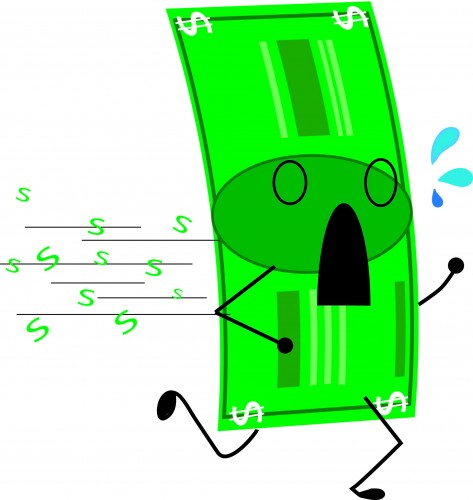Should NCAA athletes be paid for their performance in collegiate games?
Throughout the professional world of sports, athletes make anywhere from $1 million to over $10 million annually. According to USA Today, the average salary of players in the NBA, NFL and MLB is $5.15 million, $1.9 million and $3.2 million, respectively. But what about the level under the pros? The controversy seems to only get bigger.
While college athletes are given athletics scholarships and a chance to make the pros, those should not be the only benefits for athletes. Yes, the scholarships combine to a large sum but that only goes as far as their education does. What about the expenses outside of their education? Some may also say that there are just too many athletes to pay in the National Collegiate Athletic Association (NCAA). Yet, the truth is the NCAA itself makes more profit than one might think. Just like professional sports, the NCAA is a business. For example, take a look at the NCAA Men’s Basketball Tournament, also known as “March Madness.” According to Mic.com, the 2012 tournament received a staggering $1 billion dollars just from TV ads. Believe it or not, that’s more than any of the professional sports received individually in that same year. In fact, Investopedia states that the NCAA receives another 40 million from ticket sales alone and each conference earns a specific amount of money based on performance during the tournament. Still, none of that goes to the players.
Despite the numbers, some still believe that athletes simply don’t need the money as they have all the equipment and resources. But in reality, there are college athletes that struggle financially despite their scholarships. For instance, take a look at recently drafted NBA player Shabazz Napier from the University of Connecticut.
“There’s hungry nights and I’m not able to eat and I still got to play up to my capabilities,” Napier said in a CNN article. “When you see your jersey getting sold and things like that, you feel like you want something in return.”
As college athletes continue to perform at such high levels that sometimes provide more entertainment than professionals do, the controversy of player salaries continues to rise. In fact, the NCAA has already began to take action, providing unlimited meals for Division 1 Athletes after Napier’s comments. In addition, universities now have the opportunity to pay athletes for using their images. Hopefully, the revenue that the NCAA earns will one day go to the players who make it possible.


WILLIAM RODRIGUEZ
Staff Writer
BRIANA THAI
Staff Writer
Taking effect next year, college athletes wearing gear such football pads or basketball jerseys will have the chance to earn money before they even graduate. A recent ruling has allowed National Collegiate Athletic Association (NCAA) athletes to get paid at least $5,000 annually for the use of their names and likenesses, if their respective conference wishes to. However, this ruling has more negative outcomes than positive ones.
With the ruling, colleges essentially lose money considering many athletes are already attending the college on a scholarship. With the scholarships students receive to play in college, athletes are already getting paid of education, saving the athletes money. Since athletes get free or reduced tuition and get paid for playing on a NCAA team, colleges do not really get a fair share. Colleges have more than just athletes on campus, so why should only athletes have the benefit of being paid? If athletes get paid, other students deserve money too because they also contribute to the school’s success.
In order to attract athletes, colleges may spend much of their money on them, paying for their necessities and some extra money to toss around. The extra money is for the athletes’ self-benefit. This affects many student-athletes or not because colleges are pulling money from places that they have money specifically put aside for, like funding for books or more academic scholarships. With athletes getting paid, other students receive the shorter end of the stick. As stated in USA Today, “as colleges and students face spending, tuition and student debt, many question all the money spent on sports.” Nearly every university has lost a significant amount of money to benefit student athletes.
Not only do the athletes get paid for playing, but the NCAA ruling plays a role in where recipients would get picked for scholarships, and which college the athletes decide to further their education at. Now that the athletes get paid, they have another aspect to look at when picking a college: how much they’ll get paid at each college, rather than the graduation ratio or how successful the school is. On the other side, colleges would most likely offer scholarships to students based on the amount of money they are seeking to make. Eventually, athletes may attend a college for the money rather than for their education.


